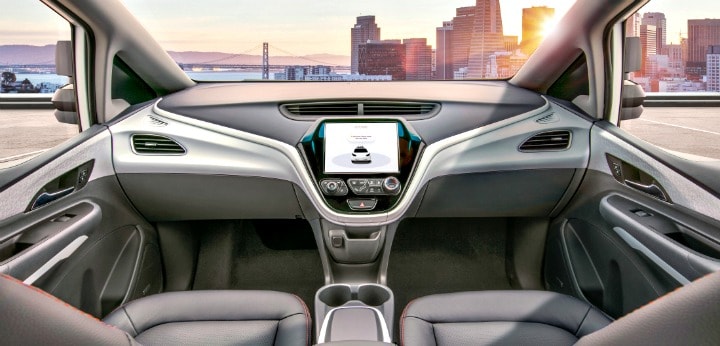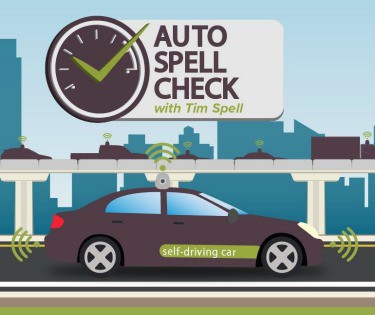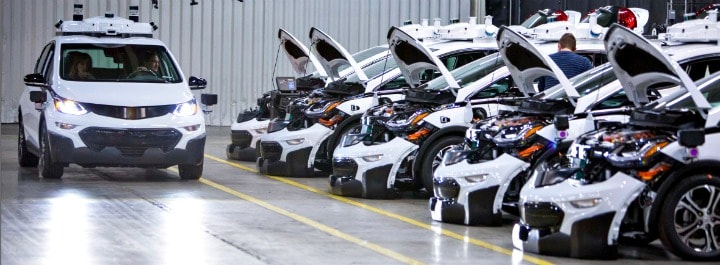GM’s Development of New Driverless Model Brings Future Closer

General Motors sent a strong message in 2015 about the future of autonomous vehicles. “I believe the industry will experience more change in the next five years than it has in the last 50 years,” says GM CEO Mary Barra. “I believe we are on the verge of a revolution in personal transportation.” Autonomous vehicles “are coming — and fast.”
About three years later, after an aggressive push by GM in self-driving technology development, Barra’s message rings true with a large-scale AV operation in progress — including a sizable fleet of driverless cars undergoing testing and a new-generation fleet nearing production.

The spark that accelerated GM’s autonomous-vehicle development was the early 2016 acquisition of Cruise Automation, a San Francisco-based autonomous-vehicle software specialist company. This move added software expertise and rapid development capability.
Soon after the Cruise investment, GM announced the production of its next generation self-driving test vehicles at the Orion Township, Michigan, assembly plant starting in early 2017. These autonomous all-electric Chevrolet Bolt EVs would join the 50-plus cars in operation in San Francisco, Phoenix and Detroit for testing of automated efficiency and safe operation.
“Revolutionizing transportation for our customers while improving safety on roads” is the goal of GM’s autonomous technology development, says Barra. “Our autonomous technology will be reliable and safe, as customers have come to expect from our vehicles.” She says human error is the leading cause of crashes, and that self-driving cars will be the answer to help save the lives of many of the 1.25 million people around the world who are killed in crashes each year.
CHECK OUT: How Driverless Cars Will Chance the Sport of Racing
In June 2017, GM announced it had produced 130 self-driving Bolt EV electric test cars, and that it was working on growing that fleet to 180. This gives GM the distinction of being the first company to assemble autonomous vehicles in a mass-production facility.
“To achieve what we want from self-driving cars, we must deploy them at scale,” says Cruise Automation CEO Kyle Vogt. “By developing the next-generation self-driving platform in San Francisco and manufacturing these cars in Michigan, we are creating the safest and most-consistent conditions to bring our cars to the most-challenging urban roads that we can find.”
These production Bolt EVs are upgraded to operate as fully autonomous vehicles, equipped with high-definition cameras, sensors, LiDAR and other hardware. LiDAR is a key component that emits pulsed laser light to provide high-resolution 3D images of the surroundings.
In March 2018, Barra upped the ante for its AV development endgame. The mission, she says, is “to create a world with zero crashes, zero emissions and zero congestion.”
“We want cleaner air to preserve our planet for future generations, which is why today’s cars are more efficient and why more of us embrace environmentally conscious options,” she says. “We want the freedom to visit with friends and family, and explore new places – without traffic jams. Connected and shared vehicles can help end the congestion that wastes our time and money.”
GM strives for zero emissions
Fulfillment of the “zero emissions” part of GM’s goal is realized with the choice of the Bolt EV to build its autonomous fleet. The Bolt EV is a small wagon propelled by a high-capacity electric motor. The motor generates 200 horsepower and 266 lb.-ft. of torque that launch the car from 0-60 mph in 6.5 seconds. Feeding the motor is a 60-kilowatt-hour lithium ion battery pack. The Bolt EV has an EPA-estimated 238-mile range.
The introduction of self-driving vehicles also addresses the “zero congestion” part of GM’s mission. Initial use of the fleet is mainly directed toward ride-hailing, which should entice commuters — ideally multiple passengers sharing a ride — away from personal car use. Driverless vehicles aren’t hindered by common driver reactions, human emotions and bad driving habits. There’s no rubbernecking, so proper speed is maintained at an accident scene, and poor decisions don’t occur as results of fatigue, impatience and anger.
Auto accidents are leading causes of traffic jams, and automated cars have the potential of removing human error from the crash equation.

Barra’s 2015 message about autonomous technology “coming – and fast” was reinforced with the recent announcement that GM will be building the new-generation Cruise AV test vehicle, the first production-ready car with no steering wheel, pedals or manual controls. Production of the Bolt EV-based vehicles is expected to begin in 2019.
If GM’s petition with the National and Traffic Safety Administration is approved, which asks for exceptions to rules instituted based on humans behind the wheel, GM plans the deployment of up to 2,600 Cruise AVs in 2019.
Cruise AVs will be app-hailed, and passengers don’t have to be concerned about driver controls or watching the road. They interface with the vehicle via LCD touchscreens mounted on the seatbacks and at the dashboard’s center. These displays allow passengers to monitor route information, select stopping points, and adjust the climate control and audio systems.
Reminiscent of the days when pull cords were used to stop a bus, buttons positioned above the passengers allow for emergency stops. After a push of the button the vehicle pulls over at the earliest safe opportunity.
RELATED: Millennials Ready to Embrace Driverless Technology
The Cruise AV maintains an awareness of its surroundings via high-definition cameras, radar sensors and five LiDAR units. GM recently acquired the Strobe, Inc. radar technology company. Strobe teams with Cruise Automation to develop next-generation LiDAR technology, which increases the speed at which GM’s autonomous-vehicle goals are achieved.
“Strobe’s LIDAR technology will significantly improve the cost and capabilities of our vehicles so that we can more quickly accomplish our mission to deploy driverless vehicles at scale,” Vogt says.
The availability of LiDAR sensors will be critical to the successful deployment of self-driving vehicles, says Strobe CEO Julie Schoenfeld. “Strobe’s deep engineering talent and technology backed by numerous patents will play a significant role in helping GM and Cruise bring these vehicles to market sooner than many think.”
Recently, GM announced investments of $2.25 billion by the London-based SoftBank Vision Fund and a $1.1 billion GM investment in GM Cruise. GM and SoftBank joining forces will drive the automaker’s mission of large-scale commercialization of automated-car technology and spur the AV revolution.
Editor’s note: Top photo courtesy of General Motors. Bottom photo courtesy of Jeffrey Sauger for General Motors.

